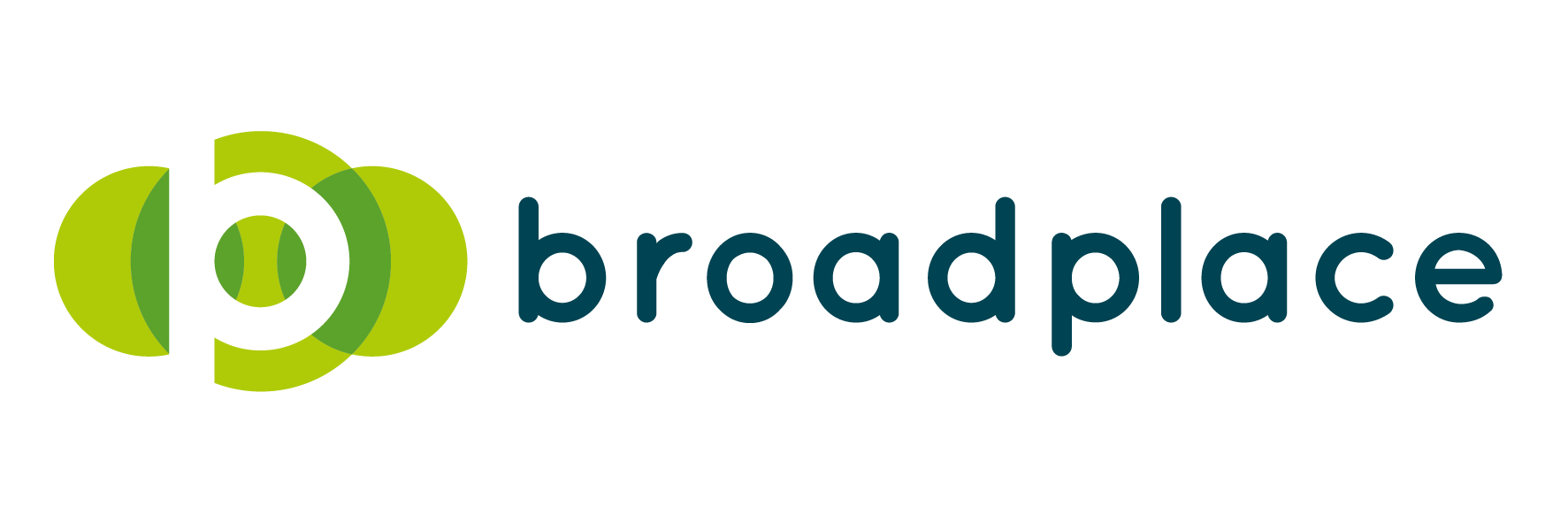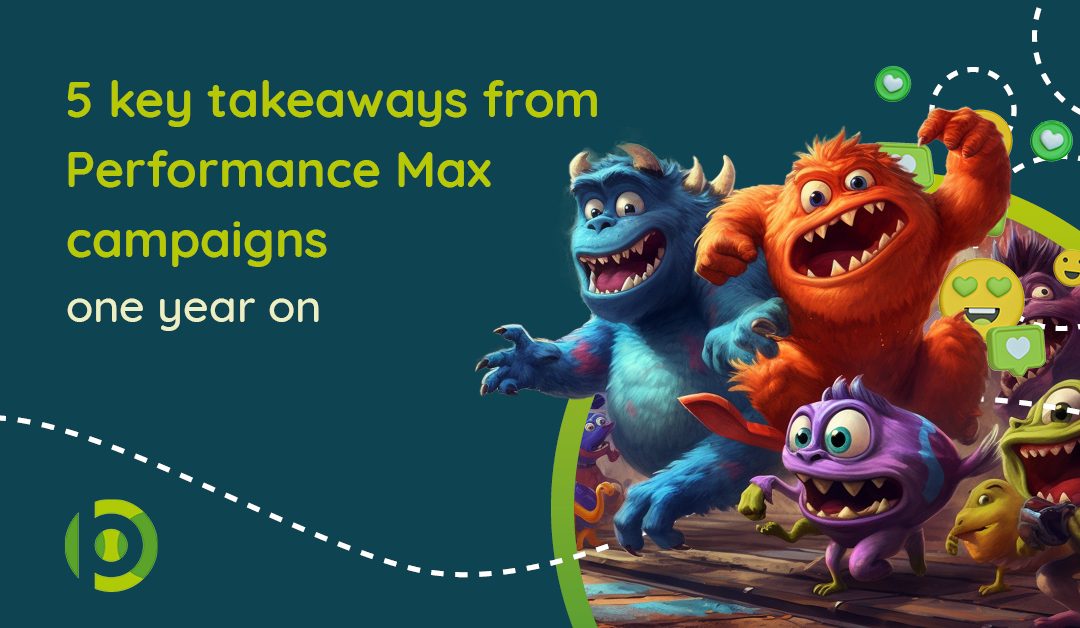Google’s new goal-based campaign type, Performance Max (PMax), was first unveiled in November 2021 and launched worldwide in 2022. It enables advertisers to access Google’s entire range of networks and channels via a single campaign, allowing for less granular campaign strategies and boosting reach across Search, Display, Discover, Maps, Gmail, and YouTube.
It’s been one whole year since it’s been launched so we decided to ask our account management team what they thought of it and what some of the key learnings are.
To do this we conducted an internal survey to capture their insights to share with you, so you don’t have to waste as much time trying to get your head around it as we did.
What is Performance Max?
Before we get started we probably need to make sure that you understand what PMax is. Performance Max is an AI driven automated campaign that has access to all of Google’s inventory (Search, Display, Discover etc.). It uses machine learning to optimise across these platforms to increase performance based on your conversion goals making real-time “smart” optimisations.
What Do Our Account Managers Think of Performance Max?
Like many past updates or new offerings on Google Ads, they are often met with scepticism and apprehension, Performance Max was no different, especially as the launch came at a cost – the discontinuation of smart campaigns. This left us and advertisers in general no choice but to adopt the new campaign type.
So, now that Broadplace has been using Performance Max for over a year, how has it performed for our clients?
We ran a quick internal survey and the results of it revealed that account managers experienced a general improvement in performance in 62% of their campaigns, whilst 15% experienced a negative impact and 23% saw no meaningful change.
Despite the survey producing relatively favourable results for PMax, account managers provided additional feedback on their experience over the last year, which we’ve shared below.
5 Learnings From A Year Of Running Performance Max Campaigns
Performance
Over 60% of Broadplace account managers experienced a general improvement in performance. When asked which metrics improved the most, 46% of account managers reported a noticeable improvement in conversion rates, and 54% reported a significant boost in conversions, sales, or leads.
This is likely attributable to PMax’s unique ability to discover considerably more “ready-to-convert” traffic throughout Google’s entire network. PMax uncovers more prospects beyond our traditional targeting methods, leading to not only an increased number of conversions at a higher rate but also, in most instances, a lower CPA.
The improvement in performance may also be attributed to account managers closely adhering to best practices when configuring their Performance Max campaigns. Taking full advantage of all available options and including all recommended assets. An efficient campaign setup clearly enables Google’s machine learning algorithms to make affective optimisation decisions and utilises the provided assets and signals as efficiently as possible.
The majority of Broadplace’s clients haven’t experienced any negative impact on performance since adopting Performance Max.
Performance Max has proven to add value to most of the accounts or at least has had no negative impact on the key metrics of campaign performance. However, it is true that not all accounts have benefited from Pmax, although it is not always clear why. Here are a few possibilities:
- Providing poor assets, or assets that lack in variety,
- Failing to use relevant audience signals, or using irrelevant signals
- Repetitive messaging
- Limiting the choice of URLs
Also, because there are limited insights it can often be difficult, even for experienced advertisers, to spot areas that need improvement. Which leads nicely onto our next point…
Limited Insights
Insights into campaign performance are vital for making informed optimisation decisions. They enable us to strategise further by providing the necessary tools to measure performance and highlight what’s working well and what’s leading to budget wastage.
Performance Max provides some insights, but they are very summarised and in most cases limited. For example, it doesn’t provide detailed reports on the performance of the assets you’ve provided or the audience signals you’ve chosen. It also lacks detailed search term reports, instead providing a summary on search categories, which is unhelpful when deciding which specific negative keywords to add.
Of course, Google’s AI has access to all of this data, and we trust it is using it to make the best possible targeting and optimisation decisions. But what if you’re not experiencing good results? Or perhaps the results being achieved are not in line with your intended strategy. Currently, there isn’t much you can do to investigate, leaving you with questions without definitive answers.
In addition to optimisation, without detailed insights into campaign performance, we are unable to provide meaningful reports for our clients and instead have to report on top-line stats only. This can leave clients with more questions than answers, even if the performance is good. Ideally, we want the ability to drill down further into the data, allowing us to provide more value to our clients through deeper and more meaningful reporting.
Google has recently announced that there will be updates to Performance Max in 2023, addressing some of the concerns surrounding insights.
Cannibalisation
Cannibalisation is when the targeting of your campaigns unintentionally overlap, which essentially leads to your campaigns competing with each other. This can result in the wrong messaging being shown to prospects, but more importantly it can dramatically impact campaign performance and drive up the price of bids within auctions.
Typically, services or products are separated by ad groups, or potentially campaigns (if different budgets are required). In many cases, it is necessary to add negative keywords to these ad groups or campaigns to avoid overlap between similar products and services.
Performance Max has been known to cannibalise from other campaigns running in the same account, affecting their performance. This is especially true if you are running a brand campaign. PMax will often target the “lowest hanging fruit” first to achieve conversions, which in most cases is bidding on your own brand name.
If you do not intend to target searches related to your brand within your PMax campaign, or you already have a dedicated search campaign for this, you will need to add your brand as a negative keyword within your Performance Max campaign. This will put a stop to PMax bidding on your brand and prevent the cannibalisation of your existing brand campaign.
This is also the case with your products and services. If you want to exclude searches for a particular service or product (that you’re already targeting with another campaign), it is best practice to add them as negative keywords to your Performance Max campaign.
If you choose not to add these negative keywords, the performance of your existing campaigns will be affected and the results on your Performance Max will be inflated.
Reach
There is no doubt that Performance Max is fantastic for reach, with its ability to serve ads across all of Google’s advertising networks and channels including Search, Display, Discover, Maps, Gmail, and YouTube. This is great news if you’re struggling to allocate your budget across multiple campaign types. However, just like display campaigns, you will need to be vigilant of where your ads are being displayed. Allowing your ads to appear everywhere can sometimes be more of a hindrance than a benefit. Unfortunately, unlike conventional Display Campaigns, Performance Max doesn’t allow you to see which websites, apps or games are displaying your ads, making it very difficult to decide which to exclude. But strategic exclusions are recommended, especially for mobile apps and games where nuisance pop up ads lead to unintended clicks and ultimately budget wastage.
If you have run a display campaign in the past, look into which mobile apps and games displayed your ads as it’s likely the same ones will be displaying them via your Performance Max campaign. If there is any where the spend was particularly high, but yielded no results, they will be great candidates for exclusion. Should you choose not to exclude, Google will eventually learn that they’re not the right placement for your campaign and stop displaying ads on them, but by this point, budget would have already been wasted, so it’s better to be proactive with preventative measures instead.
Also, when using Performance Max, you’ll often see a very high number of impressions. This is because PMax takes advantage of all of Google’s inventory and shows your ads across its entire network and every possible placement that could result in a conversion. Because of this, you’ll often experience a very low click through rate, much lower than a conventional Search campaign, but don’t panic, despite this, conversion rates are often much higher. So, it makes sense to focus on the bigger picture and judge Performance Max on the results it achieves and not the other less important metrics.
Lack of Control
Performance Max, by design, requires less manual optimisation and instead asks us to rely on Google’s AI, machine learning and automation to do this for us.
We have no control over the channels or networks that Google chooses to serve our ads on, so you may experience a higher number of irrelevant clicks. And despite being able to provide audience signals to Google, ultimately it’s down to Google’s automation and Machine Learning to decide if they use them or not.
It is also very frustrating when simple tasks such as setting negative keywords is nowhere to be found within PMax settings. But there is hope! If you take the initiative to contact Google, they will be kind enough to guide you through their new process of adding a negative keyword list to your Performance Max campaign.
Spoiler! They will ask the admin of your Google Ads account to complete a form and email it to them, at which point they will approve the request and add the negative keyword list to your campaign. Allowing you to populate the list with as many negative keywords as you like. A bit of a long winded process for something which has been so simple for so long.
Conclusion
Performance Max has its fair share of pros and cons, and whether using it is an enjoyable experience or not, there is no denying that in most cases it definitely lives up to Google’s claims that it will boost performance and achieve results for less. It’s just a little frustrating that it’s not always obvious why, which causes its own set of problems.
Pmax simplifies many aspects of running a campaign on Google Ads, making it relatively simple to set up and maintain, however the lack of control and insights can leave you feeling powerless. This isn’t so bad if your campaign is performing well, but if it isn’t, the lack of influence can again be frustrating.
Ultimately, we would welcome everyone to test Performance Max to see if it’s right for you. It’s likely it will improve performance for you and over the coming months, Google will no doubt address the concerns raised by advertisers. See the latest updates here.

